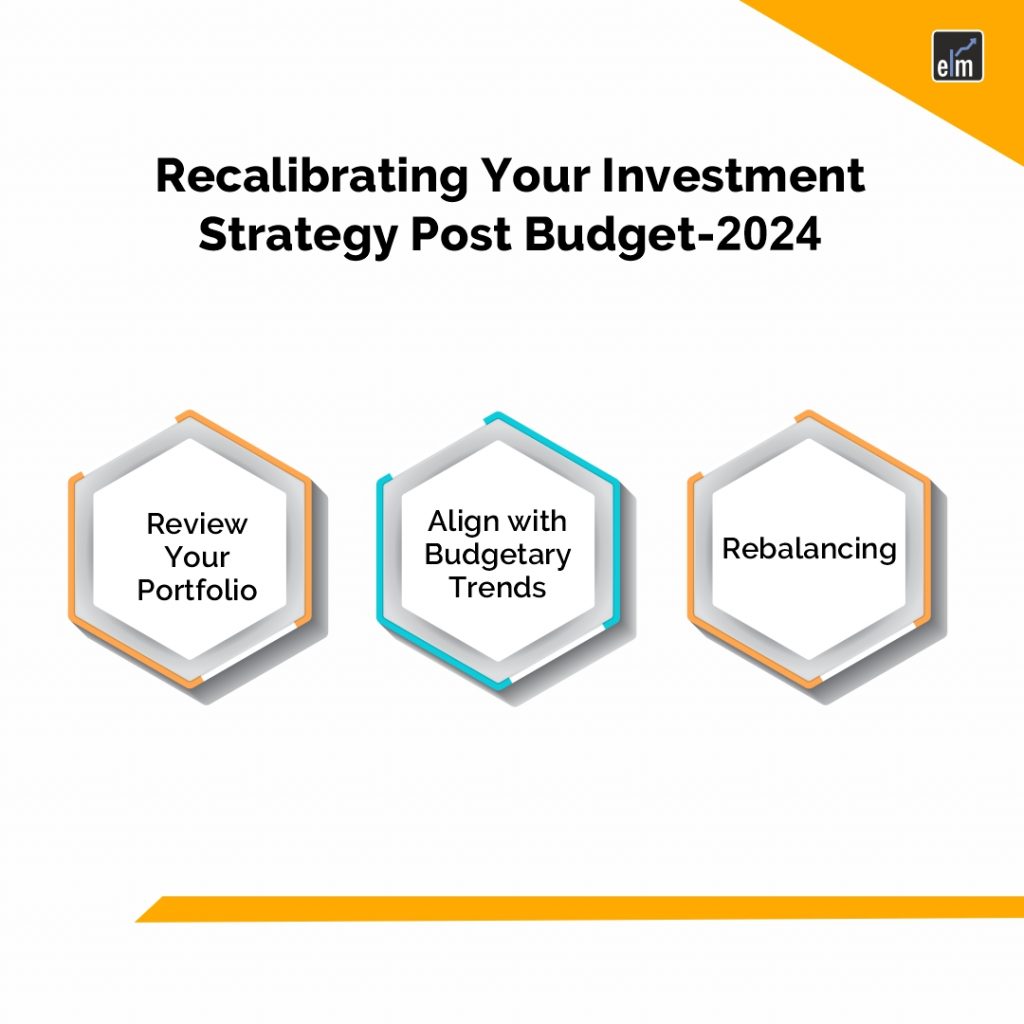An investment strategy is profitable regardless of the prevailing trend. However, the upcoming elections in 2024 have led to a notable increase in indexes, which has investors concerned about their investment strategies.
Following the release of Budget 2024, investors are encouraged to take a long-term, strategic strategy, concentrating on industries that are expected to thrive as a result of the government’s most recent policy efforts.
Investors should prioritize diversification as the market processes the budget’s implications and match their portfolios with industries that will benefit from the government’s emphasis on digital transformation and sustainable development. Effectively managing the post-budget market scenario will require staying informed and flexible.
In today’s blog, let us discuss what your investment strategy post-budget 2024 should be.
Table of Contents
Understanding Budgetary Impacts
On February 1, 2024, the Indian government unveiled the Interim Budget for 2024–2025. The interim budget offers some information about the government’s spending intentions, but a comprehensive budget will be released following the general elections. Below is a summary of the main ideas surrounding government spending:
1. Government Spending
For 2024–2025, the government has budgeted a total of Rs 47.66 lakh crore ($596 billion), a 6% increase over the previous year’s revised estimate.
- Infrastructure: With an allocation of Rs 11.11 lakh crore ($139 billion), or 11.1% more than the previous year, the budget increases spending on infrastructure development. This suggests that efforts to strengthen India’s infrastructure foundation will continue.
- Social Welfare: The government wants to keep funding programs like “Sabka Saath, Sabka Vikas” (Growth for All) in order to maintain its social welfare programs.
- Continuation of Schemes: The budget suggests spending a total of Rs 1.3 lakh crore ($16 billion) to extend the 50-year interest-free credit plan for capital expenditures to states. The goal of this is to assist state-led reforms and infrastructure development.
- Emphasis on Eastern Region: In an effort to strengthen the eastern region’s role as a catalyst for the nation’s economic expansion, the budget places a particular emphasis on its development.
Spending more on infrastructure might help industries like cement, steel, and construction. Sustaining social welfare initiatives could give low-income households security and assistance.
The emphasis on the East could result in more chances for development and investment in those states.
2. Market Reactions
Experts in the stock market had differing opinions. While some highlighted the lack of significant reforms that may have further accelerated the economy, others saw the budget as beneficial for sectors tied to infrastructure.
The market’s response to the interim budget was, all things considered, subtle. Although there was some volatility following the initial disappointment, cautious optimism and a wait-and-see attitude appear to be in the air. A clearer market direction will probably be provided by the complete budget statement, which investors are probably anticipating.
Recalibrating Your Investment Strategy Post-Budget 2024
The yearly budget release may have a big influence on your investing choices and future direction of your portfolio, so keep an eye on it. The following is a summary of the crucial actions to take into account while adjusting your investing strategy Post Budget 2024:

1. Review Your Portfolio
Now is a great opportunity to review your existing investment objectives and asset allocation. Analyse how each investment in your portfolio fits within your time horizon and risk tolerance. Evaluate the performance of the investments you currently have. Do they live up to your expectations?
2. Align with Budgetary Trends
Recognize the major statements made on the budget, such as changes to taxes, the distribution of government spending, and sectoral priorities. What effects might these modifications have on various sectors and asset classes?
Determine which industries or asset classes stand to gain from more government spending or policy changes based on budgetary patterns. Are certain industries positioned for expansion as a result of budgetary provisions?
Think about whether your portfolio has to be adjusted to fit the budget’s indicated prospective growth areas.
3. Rebalancing
After taking the budgeted adjustments into account, determine if your existing asset allocation still reflects your goals and risk tolerance.
Rebalancing can assist in maintaining your intended risk profile if the budget announcement has caused a major shift in your portfolio away from your goal allocation. To do this, you can:
Selling Overweight Assets: You may want to sell some holdings in order to lighten the weight of particular asset classes if they currently make up a greater percentage of your portfolio than you had planned.
To reach your goal allocation and give other asset classes more weight in your portfolio if they are currently underrepresented, make extra investments.
Investment Strategies to Consider
Here are investment strategies to consider for post-budget 2024-
Sector Rotation
Examine the sectoral allotments in the budget. Spending increases by the government in particular sectors, such as renewable energy, infrastructure, or healthcare, may indicate future economic prospects.
Increasing your allocation to industries that are expected to gain from budgetary allocations is a strategic investment to think about. Examine businesses in these industries, paying particular attention to those that have solid foundations and room to grow over the long run. This might entail:
- Investing in Sectoral Funds: These funds focus on particular industries, giving you the opportunity to take advantage of the budget’s growth potential.
- Choosing Specific Stocks: Look closely at the focus industries to find companies that are positioned favourably.
Tax-Saving Opportunities
Keep a close eye on any modifications to the tax laws governing various investing choices. The budget may include more tax breaks for particular types of investments.
Making the Most of Tax Advantages Examine your possibilities for making better use of tax-saving investing options in light of the tax changes. Here are a few options:
- Equity Linked Savings Schemes, or ELSS: In order to optimize tax benefits and potential long-term capital appreciation, think about boosting your contribution to these mutual funds if the budget boosts ELSS benefits.
- PPF (Public Provident Fund): Learn about this government-backed program that provides assured returns along with tax advantages.
Infrastructure Play
Increased activity and possible investment opportunities may be seen in this sector if infrastructure development is given top priority in the budget.
Examine your options for making investments in the infrastructure sector.
- Infrastructure Funds: These funds make investments in businesses that create various forms of infrastructure, such as power, roads, and bridges.
- Infrastructure Stocks: Look into and purchase stocks from businesses that are actively engaged in infrastructure development. Think about businesses that have a proven track record and specialized knowledge in infrastructure construction.
- Real Estate Investment Trusts, or REITs: Pay attention to REITs that make investments in real estate developments related to infrastructure, including logistics parks or toll highways.
Conclusion
Your investments may be impacted by the budget 2024. Examine your portfolio, adjust as necessary, and stay in line with budgetary trends (tax changes, sectoral focus). Take a look at the budget’s highlighted prospective growth industries and tax savings opportunities. Recall that diversification and long-term objectives are essential.







